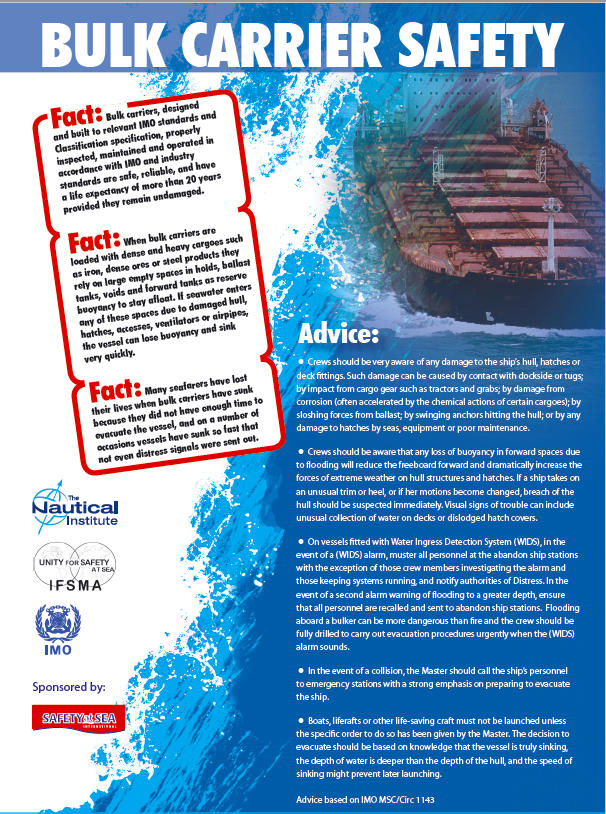Bulk Carrier Safety
This library contains information on safety of bulk carriers, and on the cargoes they carry. Blue buttons on the left connect you to relevant information.
When bulk cargoes shift, liquefy, catch fire or explode as a consequence of poor loading procedures, the consequences can be massive. Ships may capsize, lose stability or sustain severe stuctural damage. Such happenings enhance the risks - and the occurence - of death, injury, insurance claims, operational delay and considerable expense.
Unfortunately, it is often assumed that dry bulk cargoes are less hazardous, and require less expertise, than liquid bulk or containers. This is quite clearly not the case, with some 24% of large P&I claims coming from bulk carriers, of which 40% are cargo related. Despite what should already be a good level of knowledge, bulk carrier accidents continue to happen for a variety of reasons. These risks have now drawn the attention of the industry.
Carrying solid bulk cargoes safely: Guidance for crews on the Inernational Maritime Solid Bulk Cargoes Code, produced by Llyod's Register in association with the UK P&I Club and Intercargo, is a pocket guide that outlines the precautions to be taken before accepting solid bulk cargoes for shipment, and aims to raise awareness of the Code as a whole, as well as the steps to be taken when accepting a cargo for carriage. It sets out procedures for safe loading and carriage; and details the primary hazards associated with different types of cargoes. It concludes with a two page reference checklist, and a flowchart outlining the risks of each class of cargo, and summarises the steps to be followed.
While this information should be nothing new to the seafarer, it is intended to be a useful and convinient guide to be referred to during the loading procedure, and may provide a handy reference in case of dispute.
The guide reflects reflects the compliance requirements of the IMSBC Code, which became mandatory on January 1st 2011 under the SOLAS Convention. It addresses the Code's three key groups:
- A (which may liquify),
- B (chemical hazards)and
- C (all others)

